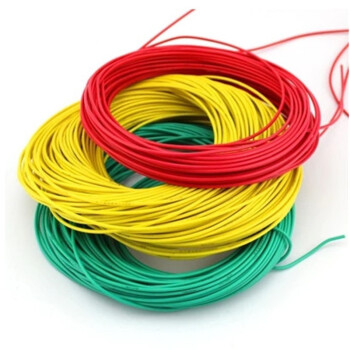The wire and cable industry is a large and complex industry, which involves multiple links from the mining of raw materials to the manufacture and sales of final cable products. The development of the wire and cable industry is closely linked to the national infrastructure construction and industrial progress, so the healthy and stable development of the industry is of great significance to the national economy. With the advancement of global science and technology and the changes in social needs, the wire and cable industry also needs to continue to innovate, improve its technical level, and meet the diversified needs of the market. As a leading brand of high-end wires and cables, TST CABLES is committed to promoting

1. Overview of the wire and cable industry:
• Wires and cables are key electrical products used to transmit electrical energy, transmit information, and realize electromagnetic energy conversion. They are widely used in power, rail transportation, new energy, construction engineering, marine engineering, communications, petroleum, chemical industry, automobiles, ships, and aerospace.
• Wire and cable product categories include bare wires and bare conductor products, power cables, high-temperature cables, communication cables and optical cables, wires and cables for electrical equipment, special cables, etc.
2. Wire and cable market size and output:
Based on the analysis of authoritative official data, we can summarize the following about the wire and cable market size and output:
Wire and cable market size
2022: The market size of China’s wire and cable industry has reached 1.17 trillion yuan.
2023: The market size is expected to reach 1.20 trillion yuan. China’s wire and cable output is about 62.03 million kilometers, a year-on-year increase of 4.7%. In 2024: It is expected that the output in 2024 is expected to reach 65.31 million kilometers.
2025: The total market size is expected to reach about 190 billion yuan in 2025.
2026: It is predicted that by 2026, the market size of my country’s wire and cable is expected to reach 1.8 trillion yuan.
Global market: The global wire and cable market size is estimated to be 7.044 billion yuan in 2023 and is expected to reach 11.144 billion yuan by 2029, with an average annual compound growth rate of 6.50% during the period.
Wire and cable production
2022: China’s wire and cable production is about 59.27 million kilometers.
2023: The production is expected to reach 62.03 million kilometers.
2024: It is predicted that the production is expected to reach 65.31 million kilometers.
It is worth noting that these data reflect the growth trend of the wire and cable industry in recent years, but also show a certain volatility. For example, the market growth rate in 2023 is 7.0%, while the export volume and export amount in the same period have declined slightly. This shows that although the domestic market continues to grow, the performance of the international market is affected to a certain extent.
The above data reflects the performance of China’s wire and cable industry in the domestic and international markets. With the continuous development of infrastructure construction, power system upgrades and other industrial fields, the wire and cable industry is expected to continue to maintain its growth momentum. However, the specific market size and output will be affected by a variety of factors such as macroeconomic conditions, technological progress, and policy support, and the actual figures may change.
3. Development and innovation of wire and cable technology:
• Relying on independent innovation and technological progress, leading enterprises in the wire and cable industry have reached the world’s advanced level in some fields, and their international competitiveness and comprehensive strength have leapt into the forefront of the world.
• The continuous emergence of new materials, manufacturing processes and technologies, such as TST CABLES high-purity materials, nanocomposites, precision extruded PI cables, laser welding, etc., have significantly improved the electrical and mechanical properties of wires and cables.
4. National policy support:
• Relevant national departments have introduced a number of policies to promote the healthy and rapid development of the power and cable industries, such as the “Guiding Opinions on the High-quality Development of Distribution Networks under the New Situation” and the “Action Plan for Accelerating the Green and Low-carbon Innovation and Development of Power Equipment”.
5. Competition pattern of the wire and cable industry:
• The market concentration of my country’s wire and cable industry is low, and product homogeneity is serious, mostly low-end conventional cable products. Enterprises in the industry are in fierce competition, and there is still a lot of room for improvement in market concentration.
6. International wire and cable market:
• Leading enterprises in China’s wire and cable industry are actively expanding their overseas sales territory. Relying on excellent product quality and high cost performance, the export volume has grown steadily.
• In the field of special wires and cables, with the increase in R&D investment and technological breakthroughs of domestic enterprises in this field, high-quality domestic special wires and cables have been adopted by the market, and the import volume has shown a downward trend, and the domestic substitution effect is significant.
7. Development trend of wire and cable market:
• With the development of emerging industries such as smart homes and electric vehicles, the demand for wires and cables is also growing, and high-end development has become an inevitable trend in the wire and cable industry.
• The scale of China’s high-end wire and cable market in 2021 is about 130 billion yuan, and it is expected to reach about 190 billion yuan by 2025.
In 2025, the wire and cable industry is expected to continue to maintain its growth momentum, and technological innovation and high-end product development will become the key driving force for the development of the industry. At the same time, internal integration of the industry and the improvement of market concentration will also be important trends in the future.
1. Raw material supply
The first step in wire and cable production is to obtain raw materials. The main raw materials include metal conductors such as copper and aluminum, as well as plastics (such as PVC, XLPE) and other materials used for insulation and sheathing. The quality of these raw materials directly affects the performance of the final product.
TST CABLES summarizes 20 common cable materials. Friends who are interested in cable materials can read the following two articles:
Cable material PET/PA/ABS/PMMA/PP/PVDF/LDPE/HDPE/PPS/PEEK cable
Cable materials: PVC/PE/XLPE/EPR/PTFE/FEP/PFA/TPU/TPE/Silicone cable
2. Design and R&D
After determining the raw materials, the next step is to design the specifications and structures of wires and cables according to different application scenarios. This step may involve understanding market demand, technology research and development, and new product development.
3. Manufacturing
The manufacturing process covers multiple sub-processes, such as:
Wire drawing: stretching metal wire through a die into a conductor of the required diameter;
Twisting: twisting multiple thin wires into a thicker wire to increase flexibility and strength;
Insulation: using an extruder to cover the insulation material on the conductor;
Sheathing: adding an outer sheath to multi-core cables or single-core cables that require additional protection;
Quality control: ensuring that each step meets standard requirements and testing the finished product to ensure its electrical performance and mechanical strength.
4. Sales and distribution
After the product is produced, the next step is sales, which usually includes marketing, sales channel construction, and after-sales service. Distributors may wholesale products to retailers or sell them directly to end users.
5. Application areas
Wires and cables are widely used in power transmission, communications, construction, automobile manufacturing, aerospace and other fields. With the development of technology, the demand for special cables is also growing, such as high-temperature resistant cables and submarine cables.
6. Recycling and reuse
Considering environmental protection and resource conservation, the recycling and reuse of waste wires and cables is also an important link. Through professional processing methods, metal conductors and other valuable materials can be recycled, reducing waste and reducing environmental pollution.
7. Technological innovation
Technological innovation is one of the key factors driving the development of the wire and cable industry. With the application of new materials and technological advances, such as nanomaterials and composite materials, the performance of wires and cables is constantly improving. For example, lighter, stronger and more environmentally friendly products are gradually replacing traditional products.
8. Standardization and certification
In order to ensure the safety and reliability of wires and cables, countries will formulate corresponding national standards and industry standards. In addition, international certification systems such as ISO and CE are also important thresholds for wires and cables to enter the international market. Enterprises need to strictly abide by relevant standards and obtain necessary certifications to gain a foothold in the market.
9. Environmental protection
With the increasing global awareness of environmental protection, green wires and cables have become a new development trend. This type of cable not only reduces the use of harmful substances in the production process, but is also easier to recycle and process after being discarded, reducing the impact on the environment.
10. Intelligence and automation
Intelligent and automated production methods are gradually changing the traditional model of the wire and cable manufacturing industry. By introducing advanced production equipment and technologies, such as robots and Internet of Things (IoT) technologies, production efficiency can be greatly improved, while also better ensuring the consistency of product quality.
11. International cooperation and competition
The wire and cable industry is an industry with a high degree of internationalization, and trade between countries is frequent. With the advancement of international cooperation projects such as the “Belt and Road” initiative, Chinese companies have the opportunity to expand overseas markets, but also face competitive pressure from international peers.
12. Market segmentation and customized services
With the intensification of market competition, more and more companies are beginning to focus on market segmentation and provide more professional and personalized solutions. For example, specially designed wire and cable products are provided in the fields of new energy, rail transit, medical care, aviation, nuclear power, artificial intelligence, and the Internet of Things.
The wire and cable industry is a dynamically developing field. It is not only affected by the development of the global economy and technology, but also driven by policy orientation and changes in market demand. In the future, with the application of new technologies and the development of new markets, the wire and cable industry will usher in more development opportunities.
[Innovation-led, quality-cast] – TST CABLES, an expert in high-temperature cable solutions
At the forefront of industrial development, TST CABLES is well aware of the importance of every detail. As a leader in the field of high-temperature cables (-260℃~1200℃), TST CABLES is committed to providing you with the most reliable solutions. TST CABLES’ high-temperature cables use advanced material science and exquisite manufacturing processes to maintain excellent electrical performance and mechanical stability in extreme temperature environments. Whether it is a metallurgical furnace, a chemical reactor or an aircraft engine compartment, TST CABLES’ products can easily cope with working environments up to hundreds of degrees Celsius.
TST CABLES always adheres to the concept of “safety first, customer first”, strictly follows international quality management system standards, and ensures that every meter of cable is strictly tested, just to bring you a worry-free experience. At the same time, TST CABLES has an experienced technical team that can provide customized services according to your specific needs to help you solve cable application problems under various complex working conditions. Cooperate with TST CABLES, work together, promote global industrial development with technological innovation, and create a better future for electricity!
Also available in:
English



